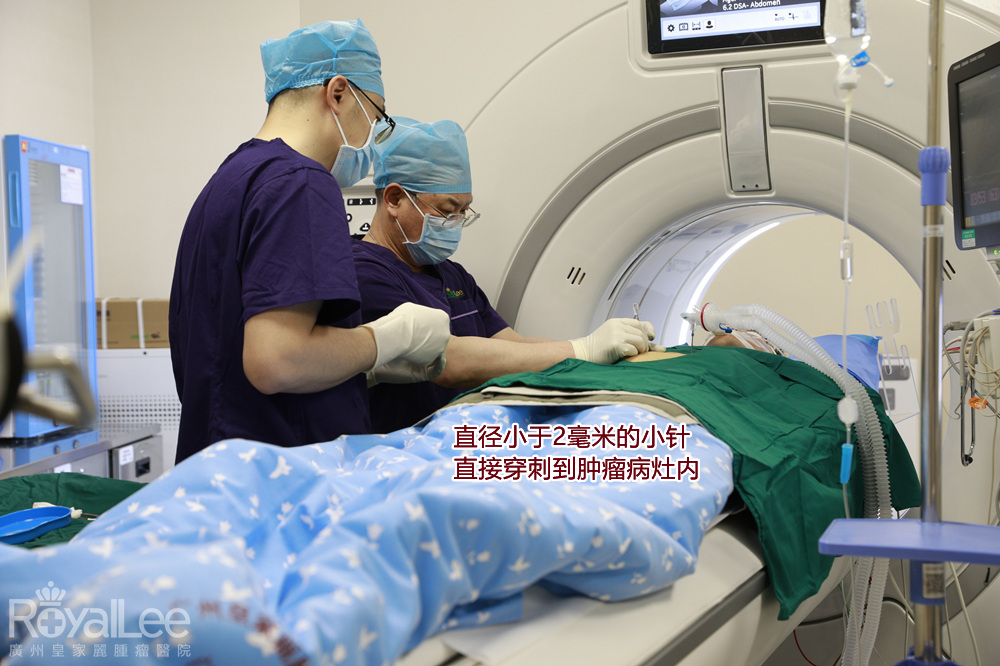
Small needles with a diameter of less than 2 mm puncture directly into the tumor lesion.

In microwave ablation treatment, it only takes a few minutes to ablate one area.

Before treatment: multiple metastases of the liver

After the needle is inserted, the temperature inside the tumor rises rapidly, and coagulation necrosis occurs rapidly in the tumor tissue.

The tumor foci are dying by heating














